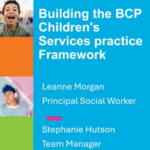
Councils are struggling to find secure children’s home placements for vulnerable children, the president of the Association of Directors of Children’s Services has warned.
Speaking at her inauguration, Alison Michalska said children in need of a secure placement on welfare grounds were now “almost de facto” going to be sent out of area due to a shortage of units.
She said children’s services directors had been trying for more than two years to get the government to help increase capacity by sharing the “financial risks” of running secure homes, but had little success.
“Currently, demand far outstrips supply, 15 referrals for every bed. Some of our number within ADCS are working on building a regional business case for increasing bed capacity in secure children’s homes. Seems to me that’s the kind of innovation that would be of benefit to the whole sector.”
Official figures show there were 254 places commissioned at secure units in England and Wales in 2016, down 34% on the 390 places available for use 10 years earlier. Half of the children in secure homes last year were placed there by councils on welfare grounds for their own protection, up from 37% in 2010.
Last year, the president of the family courts warned more English councils were sending children to secure units in Scotland due to a lack of placements. He warned a legal gap meant the council’s care orders were “unenforceable” north of the border and said an urgent solution was needed. The government has since inserted clauses in the Children and Social Work Bill to close the gap.
Michalska said she wanted action to help reduce out of area placements for all children in care, and hoped the government’s fostering stocktake would “play an important” part in reducing the use of distance placements for foster children.
“We need our children in care to be closer to their communities, their extended families, friendship networks – not scattered hither and yon across the country,” she said.
But she raised concerns that “other slightly mad notions floating around the fostering world” would set back improvements in care.
“There are risks in the over-professionalisation specialisation or unionisation of foster carers. What I find irritating about these kind of notions, is that they take no account of whether a highly professionalised, specialist, unionised foster carer workforce would improve the outcomes for the children they care for.”
On the issue of funding for services, Michalska warned that the government must not lose focus of the “£1.9 billion funding gap” in children’s services as attention shifts to supporting adults.
“With more children than ever before needing the support of our statutory and voluntary services, it is our duty to ensure that society prioritises its future citizens and that no child is left behind,” she said.
She called for greater transparency in the government’s social care innovation programme projects in order to improve learning from the projects.
Responding to Michalska’s comments on secure placements, a Department for Education spokesperson said: “We are working closely with the sector to consider how the supply of places could be better planned and coordinated to meet changing and complex needs.
“We will establish a new Residential Care Leadership Board to take forward this work, and are currently recruiting for its chairperson.”



 Bournemouth, Christchurch and Poole
Bournemouth, Christchurch and Poole  Hampshire County Council
Hampshire County Council  Oxfordshire County Council
Oxfordshire County Council  South Gloucestershire Council
South Gloucestershire Council  Wokingham Borough Council
Wokingham Borough Council  Webinar: building a practice framework with the influence of practitioner voice
Webinar: building a practice framework with the influence of practitioner voice  ‘They don’t have to retell their story’: building long-lasting relationships with children and young people
‘They don’t have to retell their story’: building long-lasting relationships with children and young people  Podcast: returning to social work after becoming a first-time parent
Podcast: returning to social work after becoming a first-time parent  How managers are inspiring social workers to progress in their careers
How managers are inspiring social workers to progress in their careers  Workforce Insights – showcasing a selection of the sector’s top recruiters
Workforce Insights – showcasing a selection of the sector’s top recruiters 

 Facebook
Facebook X
X LinkedIn
LinkedIn Instagram
Instagram
DfE could reopen Redbank in Lancashire. The site sits empty but requires investment as it has been rundown.
The Secure Unit at Tiffield (Northamptonshire) is mothballed and could be reopened? When last used in 2006/7 there were not enough requests to make it viable (particularly as the Young Justice Board withdrew funding to concentrate on STC’s as they were cheaper per head to run).
The buildings are still dotted around the country, can only be a matter of time before the economics makes sense. I’m sure there would be a private provider out their who might be interested? They have all done so well with STC’s…….
Making a decision to remove a young persons Liberty is often at the end of a long and complicated pathway of intervention . Trying to locate a secure bed is increasingly challenging and needs attention. Our children cannot continue to be placed so far away from home impacting on contact with important people, compounding their sense of separateness from the world and impacting on exit planning .
Secure welfare beds need to be a government priority .